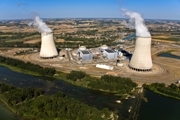EDF - NPP - Golfech
ID RNM
gol
Image

Body
Located on the right bank of the Garonne river, in the department of Tarn-et-Garonne, the Golfech NPP comprises two 1300 MW pressurized water reactors connected to the grid in 1991 and 1994.
Crédit photo Didier Marc
Tooltip
EDF - NPP - Golfech
Located on the right bank of the Garonne river, in the department of Tarn-et-Garonne, the Golfech NPP comprises two 1300 MW pressurized water reactors connected to the grid in 1991 and 1994.
Site unique ?
 return to top
return to top





